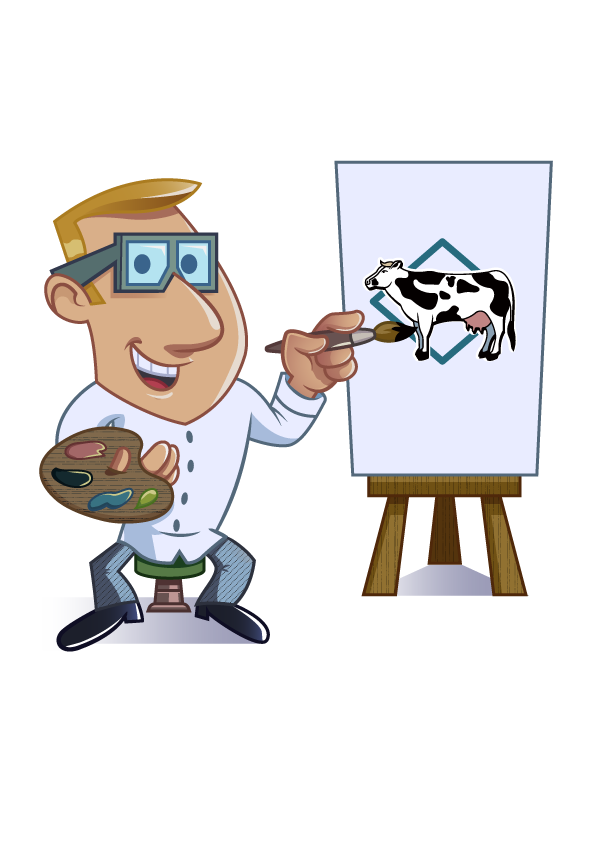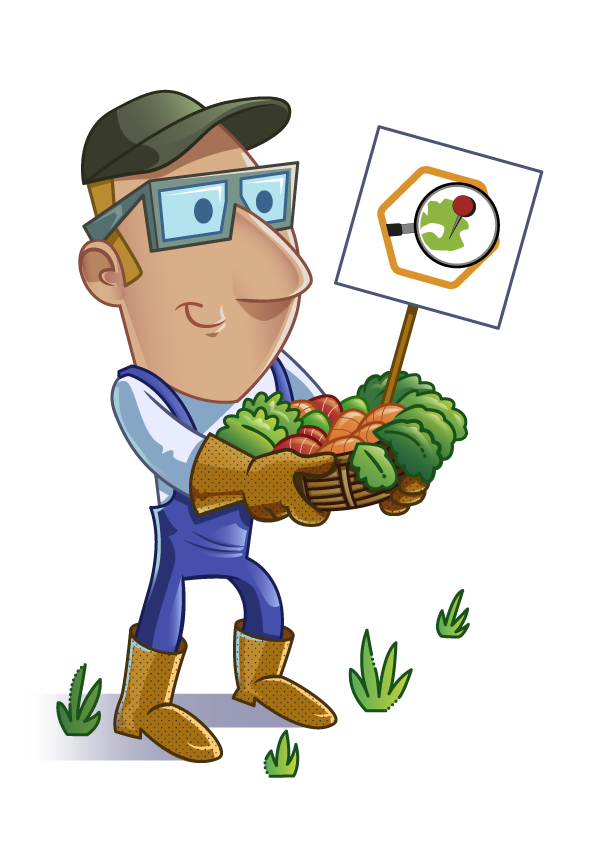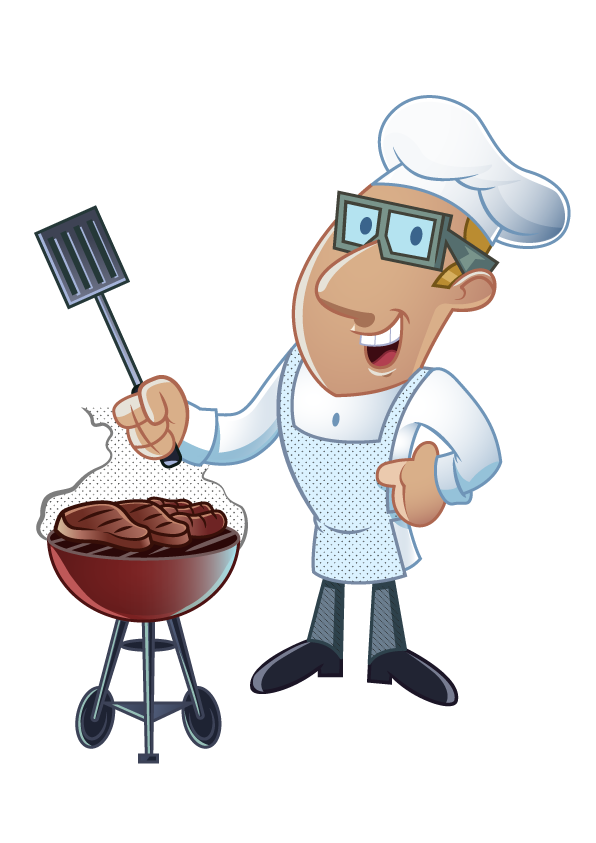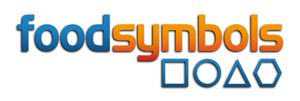FOODSYMBOLS
OUR STORY
Have you noticed how the topic of nutrition and the people’s attitudes towards food have changed in recent years? The changes can be spotted everywhere, from friends and relatives who, either voluntarily or due to health reasons, suddenly begin to avoid certain ingredients or parts of a menu, all the way to restaurants or events that are completely dedicated to a diet / nutrition method.
- The number of vegetarians and vegans has massively increased in the last ten years. What initially began as a trend has long since become a way of life to which trade and gastronomy have reacted actively.
- Food intolerances already occur in infants and can be treated specifically. In such cases, accurate information and labelling are far more than important – they are vital.
- Those who suffer from allergies know what and where they can eat without hesitation, and if they are unsure, they just look for something else or ask for more details.
These are just three examples that clearly prove that the accuracy of information and labelling must be raised to a whole new level.
foodsymbols is an initiative launched by food IT Consulting, whose aim is to implement a standardized, easy-to-understand set of symbols meant for food labelling.


OUR PHILOSOPHY
Information and labelling - that is the philosophy behind foodsymbols. Short and sweet, because the better the information on allergens, intolerances, special nutrition and everything related to these issues is, the easier it is for us to work together in our society. foodsymbols allows manufacturers, distributors and consumers to inform and get informed right away, regardless of their native languages and cultures.
A foodsymbol says more than 1000 words!
This is the reason why we put a lot of time and creativity into the selection of the symbols. This is the only way to ensure that they are understood internationally and independently of education and culture.
HOW TO USE
It's easy! foodsymbols are used for labelling food in supermarkets, online shops, restaurants and catering. In short, wherever food can be bought or consumed.
Allergies and special forms of nutrition, whether voluntarily or forcibly adopted (in order to survive), are more present than ever and dominate our everyday lives.
Why is it that even you, a person who doesn’t suffer from any allergies or is forced to adopt a special form of nutrition, are influenced by this? You can find the answer to this question under "PERFECT FOR ... - – ... YOU!
Packaged or unpackaged, raw or ready to eat - manufacturers and suppliers use foodsymbols for simple and above all unambiguous labelling. This way, the consumer sees in an instant whether the product they are looking at is safe for them or not.


... FOR ALLERGENS
foodsymbols with the GREEN CIRCLE always stand for the topic "Allergens contained".
Allergy sufferers have it easier now than they did a few years ago, but even so it is not always easy for them or those who cook for them to find their way around the jumble of packaging texts and keep track of things.
Hidden ingredients make things especially dangerous and even life-threatening for an allergy sufferer. foodsymbols facilitate the search for suitable dishes and ingredients. The allergen symbols clearly show what the product contains or not; they are so easy to read that any person, young or old, can understand them right away.
Food labels that present the exact ingredients, also known as allergens, printed in bold are now standard for packaged goods. But what do allergy sufferers do with unpackaged goods? What happens abroad? What do allergy sufferers do if they have forgotten their glasses and would need a magnifying glass to read the labels?
foodsymbols bring clarity and transparency to the list of ingredients and label allergens in such a way that the products can be bought and used without hesitation.
The standardized set also includes two important foodsymbols for "no allergen information" and "no allergens contained".
In the following, you can read a list of all the allergens that have to be presented on the label, in accordance with the EU Regulation on the provision of food information from 2014. foodsymbols provide clear symbols for each and every one of these allergens:
-
cereals containing gluten
Product contains gluten-containing cereals, namely wheat (such as spelt and khorasan wheat), rye, barley, oats and products thereof. -
crustaceans
Product contains crustaceans and products thereof -
eggs
Product containing eggs and products thereof -
fish
Product contains fish and products thereof -
peanuts
Product contains peanuts and products thereof -
soy
Product containing soya and products thereof -
milk
Product contains milk (including lactose) and products thereof -
nuts
Product contains nuts, namely almonds, hazelnuts, walnuts, cashew nuts, pecans, Brazil nuts, pistachios, macadamia nuts and products thereof. -
celery
Product contains celery and products thereof -
mustard
Product contains mustard and products thereof -
sesame seed
Product contains sesame seeds and products thereof -
sulphur dioxide and sulphites
Product contains Sulphur dioxide or sulphites with more than 10mg/kg or 10mg/ltr respectively -
lupins
Product contains lupins and products thereof -
mollusks
Product contains mollusks and products thereof -
no information on allergens
No allergen information is given for the product -
contains no allergens
Product does not contain any allergens requiring labelling
... FOR FORMS OF NUTRITION
The "YELLOW HEXAGON" designates another foodsymbols category, namely "Forms of nutrition and product properties".
We have designed foodsymbols for (almost) all types of diets, making sure that they are simple and easy to understand. People with voluntary, self-chosen diets need to be able to consume clearly and unambiguously declared products and food.
With the help of foodsymbols, unpackaged, packaged and also processed or ready-to-eat goods can be easily labelled.
foodsymbols are already in use in Germany, Spain, Japan and on the Fiji Islands, because the individual icons have been created in such a way that their symbolism cannot be misinterpreted. Anyone can read them, regardless of language and age.
We are currently offering symbols for the following diets:
-
Vegetarian (ovo-lacto-vegetarian)
Products without ingredients "from dead animals"; the only ingredients of animal origin are eggs, milk and honey -
vegan
Products made entirely without ingredients of animal origin -
raw food
Products whose ingredients have not been heated during the manufacturing process or which have not undergone any processing, including milk products made from raw milk, eggs and raw meat -
whole grain
Products whose flours, flakes, etc. contained therein are produced exclusively from the whole grain (incl. seedling and skin) -
local
Products with at least 70% of their ingredients grown or produced in their own region, a supplementary explanation for the customer is recommended. -
organic
Products that are produced (licensed) according to the criteria of organic farming. -
halal
Products manufactured according to the "Islamic law", in accordance with the meaning of the word -
kosher
Products made according to Jewish dietary laws


... FOR UNWANTED INGREDIENTS
foodsymbols with a red triangle symbolize the unwanted ingredients in products. True to the motto: "Attention, contains ...".
You must have been in this situation before: you are invited to an event and stand with a growling stomach in front of the buffet... but what is in the delicacies? Especially in catering, unwanted ingredients are often used as a matter of course, but nobody knows precisely what they’re dealing with. These unwanted ingredients range from garlic and chilies all the way to alcohol, even if the latter is only used for frying.
Therefore, we have also designed foodsymbols for unwanted ingredients. We want to make sure that you see at a glance what is and is not included in a particular product or meal.
This category of foodsymbols is especially suitable for trending products that attach particular importance to omitting and avoiding various ingredients.
As far as packaged, unpackaged and ready-to-eat products we have put together a list of symbols for the following unwanted ingredients:
-
spicy ingredients
Products which are spicy -
garlic
Products containing garlic -
ginger
Products containing ginger -
liquor
Products containing alcohol or alcohol-tasting ingredients (e.g. rum flavour)
... FOR FREE FROM INFORMATION
The DARKBLUE SQUARE marks the "FREE FROM" information on the respective products, be it on the shelf or in the restaurant.
foodsymbols in the "free from" section are particularly important. Similarly to some other categories, such as "for allergens", "for forms of nutrition" and so on, in the case of “free from” products it is particularly important for the target group to know with certainty that the items are safe for them.
Ready-to-eat food can be labelled just as easily as loose or packaged goods.
The message of the foodsymbols should never be misunderstood because of age or language barriers.
We are currently offering symbols for the following "free from" ingredients:
-
Cereals containing gluten
Products made without the addition of gluten-containing ingredients. In addition, all potential contaminations in raw materials or during production are avoided. A maximum gluten content of 20 mg per kg of food should be aimed at. -
Lactose
Products containing less than 100 mg/kg of lactose (lactose) -
Added iodine
Products to which iodine has not been added (e.g. via iodised salt) -
Added yeast
Products, in particular bakery products, which are not loosened with compressed yeast (baker's yeast) -
additives
Products which are manufactured completely without additives, whereby the ingredients contained must not contain any additives, not even those which were no longer declared because of the carry-over regulation. -
GMO ingredients
Products for which no genetically modified ingredients were used anywhere in the manufacturing process. This 0.0% definition also applies to feed (in animal rearing), enzymes (and the strains from which they are derived), additives and processing aids.


... FOR MEAT
The GREY BLUE rhombus is used in the foodsymbols in order to symbolize meat.
The labelling of meat ingredients has become a big issue in recent years due to some scandals. It is therefore obvious that we need to provide foodsymbols for the respective meat source, and we take this responsibility seriously.
Especially in ready-to-eat meals, meat types are sometimes mixed and in addition to pork there is also a certain percentage of chicken or beef.
This detail is of interest mostly for people who have to rely on the information provided on labels because the intolerances they suffer from or their religious convictions impose a certain diet.
We are currently offering foodsymbols for the following meat types:
-
beef
Meat from cattle (various breeds of domestic cattle, wild cattle and also buffalo and bison) -
pig
Meat from domestic swine -
poultry
Meat from bird species (farmed and domestic animals, wild birds) suitable for human consumption (chicken, turkey, goose, duck, wild feathered game, pigeon, partridge, pheasant, wild duck, ostrich) -
sheep
Meat from sheep (lamb, mutton, sheepmeat) -
goat
Meat from domestic goats -
game
Venison, i.e. meat from wild animals subject to hunting law (elk, wild boar, hare, kangaroo, seal, etc.), with the exception of wild fowl -
fish
Freshwater and saltwater fish suitable for human consumption -
insects
Insects suitable for human consumption or authorized for human consumption


